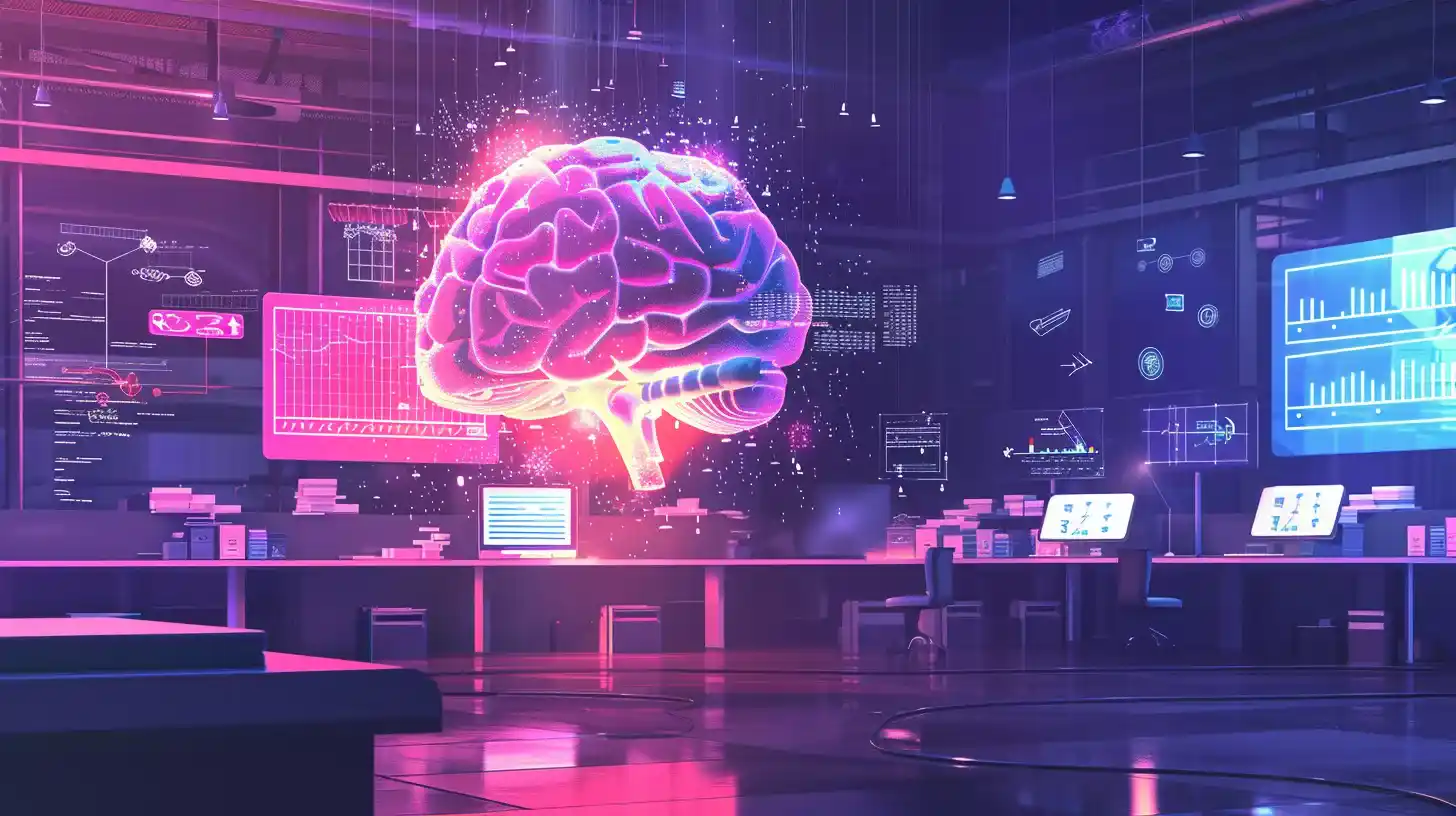Table of Contents
Retrieval-Augmented Generation (RAG): Large language models (LLMs) have taken the AI world by storm, churning out impressive feats of text generation and comprehension. But what if we could empower them with an extra dose of brilliance? Enter Retrieval-Augmented Generation (RAG), a revolutionary approach that unlocks a new level of sophistication for your applications.
Imagine an LLM that’s not confined to its internal knowledge base. RAG shatters this limitation by seamlessly integrating external data retrieval. Think of it as equipping your app with a built-in research assistant, constantly on the hunt for the most pertinent information to fuel its responses.
Let’s take a trip to the retail sector. Envision a shopping assistant that transforms customer interactions. Gone are the days of generic responses and frustrating dead ends. With Retrieval-Augmented Generation, your assistant morphs into a savvy product guru, effortlessly retrieving product details and weaving them into insightful recommendations. By implementing an RAG pipeline, developers can optimize the retrieval process, ensuring that the most relevant data is fetched and integrated seamlessly into the generation output.
Imagine a customer inquiring about the “latest smartphone.” The RAG-powered assistant wouldn’t just regurgitate specifications. It would tap into a vast knowledge base, unearthing reviews, expert opinions, and real-time comparisons to deliver a comprehensive response that exceeds expectations.

The magic of RAG isn’t confined to retail shelves. This versatile technology possesses the potential to revolutionize diverse industries:
- Healthcare: Imagine a doctor’s companion that retrieves patient records and the latest research with lightning speed, informing precise diagnoses and personalized treatment plans.
- Finance: Financial analysts could leverage RAG to weave real-time market data and historical trends into a tapestry of informed decisions, propelling them ahead of the curve.
- Education: Students could access a universe of knowledge at their fingertips. RAG-powered applications could retrieve study materials, and research papers, and provide instant answers to their most burning questions, empowering self-directed learning.
The possibilities are as boundless as the human imagination. Delving into RAG LLM is an exhilarating adventure. This technology holds the key to crafting smarter, more efficient applications across the spectrum. So, are you ready to unleash the power of RAG? The future of intelligent applications awaits!
Retrieval-Augmented Generation-Powered Application: A Step-by-Step Guide
Now that you’re brimming with excitement about the Retrieval-Augmented Generation’s potential, let’s dive into the practicalities of building your first RAG-powered application. This step-by-step guide will equip you with the foundational knowledge to embark on this rewarding journey.
1. Identify Your Use Case:
The first step is to pinpoint the specific problem you want your application to solve. Is it a customer service chatbot that needs to provide accurate product information? Perhaps it’s a financial advisor tool that retrieves real-time market data. Clearly defining your use case will guide your technology stack selection and data preparation.
2. Gather Your Data Arsenal:
The success of your RAG application hinges on the quality and relevance of your data. This data will fuel the retrieval engine and ultimately shape the information your LLM accesses. Depending on your use case, you might leverage internal databases, public APIs, or curated knowledge graphs.
3. Choose Your Weapons: Selecting the Right Tools:
The LLM serves as the heart of your application, generating human-quality text. Popular choices include OLMMA and Bard. For data retrieval, consider powerful tools like Qdrant or Faiss. Finally, Python acts as the glue, seamlessly stitching these components together.
4. Data Preparation: Shaping Your Knowledge Nuggets:
Raw data often requires some TLC before it becomes digestible for your application. This might involve cleaning, normalization, and feature engineering to extract the most relevant information. The goal is to transform your data into a format that facilitates efficient retrieval by the LLM.
5. Putting it All Together: Coding Your Masterpiece:
With your tools chosen and data prepped, it’s time to weave your RAG application into existence. Python libraries like transformers and faiss provide the building blocks to connect your LLM to the retrieval engine. This code will define how your application retrieves relevant data and feeds it to the LLM for sophisticated response generation.
6. Test, Refine, and Iterate:
The magic of RAG lies in its ability to learn and improve. Rigorously test your application with a diverse range of queries. Analyze its responses, identify areas for improvement, and fine-tune your data and code accordingly. Remember, the journey of building a successful RAG application is an iterative process.
This guide equips you with the foundational knowledge to embark on your RAG adventure. Remember, the possibilities are as vast as your imagination. So, do your creative hat, tap into the power of RAG, and transform the way your applications interact with the world!
The Future of Retrieval-Augmented Generation: A Glimpse Beyond the Horizon
RAG technology is still in its nascent stages, but its potential stretches far into the future. Here are a few intriguing possibilities on the horizon:

1. Democratization of Knowledge Access:
RAG has the potential to democratize access to knowledge. Imagine a world where anyone, regardless of background or location, can leverage RAG-powered applications to uncover specialized information or gain insights from complex domains. This technology could bridge the knowledge gap and empower individuals to make informed decisions in various aspects of life.
2. Evolution of Human-Computer Interaction:
RAG promises to revolutionize human-computer interaction. Imagine conversational AI experiences that transcend scripted responses and tap into a vast well of real-time information. This could lead to hyper-personalized interactions, tailored to individual needs and contexts.
3. The Dawn of Explainable AI:
One of the biggest challenges with LLMs is their “black box” nature. RAG offers a glimmer of hope for explainable AI. By surfacing the data sources used to generate responses, RAG increases transparency and fosters trust in AI systems.
4. Cross-Lingual Communication Barriers Crumble:
RAG’s ability to retrieve information across various sources opens doors for cross-lingual communication breakthroughs. Imagine real-time translation tools that not only convert languages but also contextualize information based on culturally relevant data retrieval.
5. The Rise of Hyper-intelligent Applications:
As RAG technology matures and integrates with other cutting-edge advancements in AI, we can expect the emergence of hyper-intelligent applications. These applications will possess unprecedented capabilities for learning, reasoning, and adapting to dynamic situations.
The future of RAG is brimming with excitement. This technology has the potential to transform the way we interact with information, communicate with machines, and ultimately, understand the world around us. As developments unfold, RAG promises to usher in a new era of intelligent applications that enhance our lives in profound ways.
The Call to Action: Unleash the Power of Retrieval-Augmented Generation in Your Applications
The world of RAG LLM is no longer a distant dream; it’s a tangible reality waiting to be explored. Here’s how you can bridge the gap between inspiration and action:
- Start Small, Experiment Wildly: Don’t be intimidated by the vast potential of RAG. Begin with a focused use case, perhaps a simple FAQ chatbot or a customer service assistant for a specific product line. As you gain experience, gradually introduce complexity and explore new frontiers.
- Embrace the Open-Source Community: The RAG LLM community thrives on collaboration. Numerous open-source libraries and frameworks exist to empower your journey. Actively engage with online forums and communities to leverage the collective knowledge and accelerate your learning curve.
- Stay Abreast of Advancements: The field of RAG LLM is rapidly evolving. Dedicating time to staying updated on the latest research papers, industry developments, and cutting-edge tools will ensure your applications remain at the forefront of innovation.
- Think Beyond the Obvious: Don’t limit yourself to conventional applications. Let your imagination soar and explore unorthodox use cases for RAG. Perhaps it could revolutionize creative writing tools or personalize educational experiences.